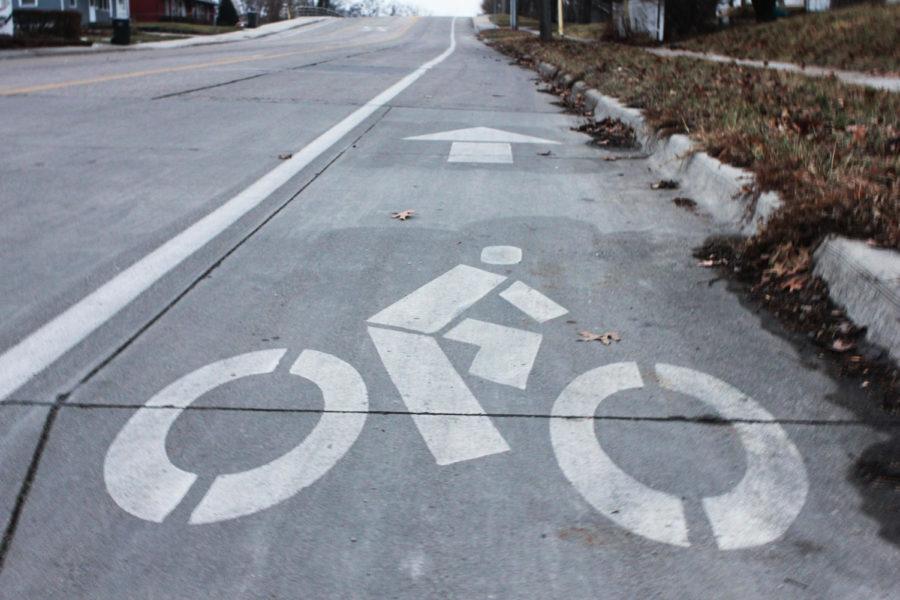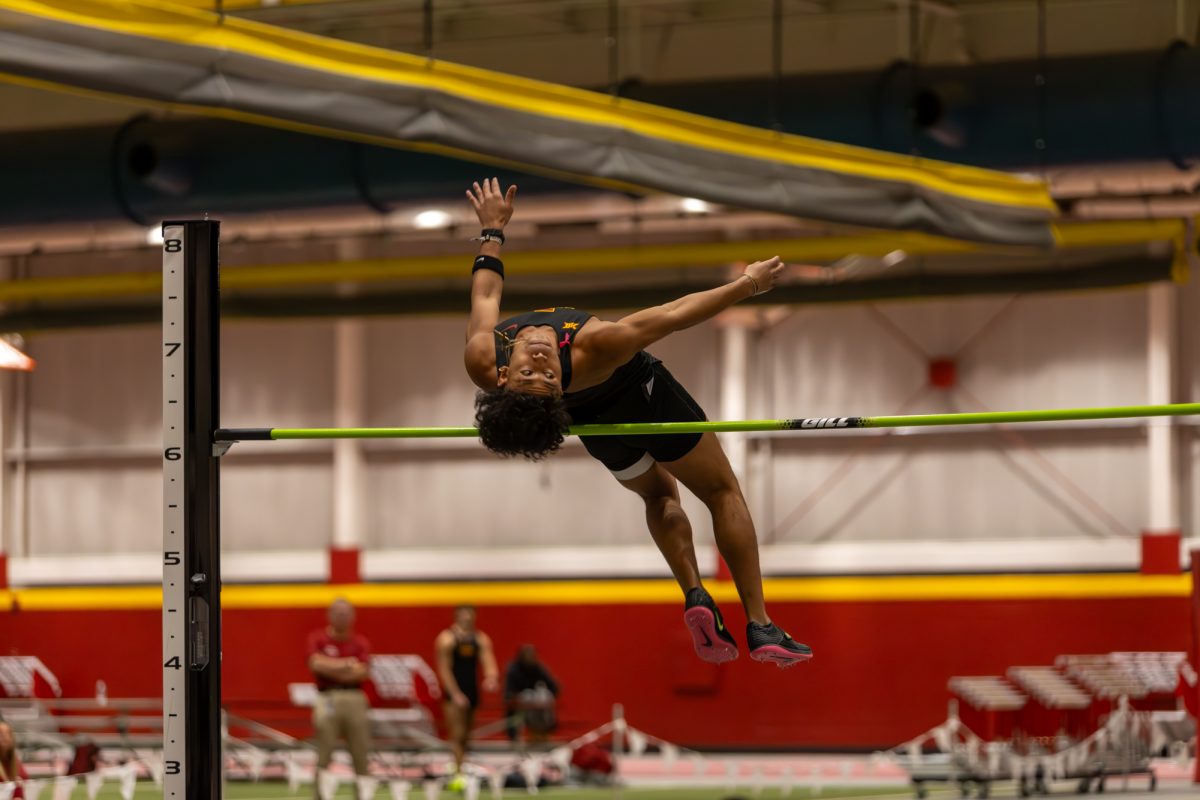Campustown bicycle share rows benefit bike transportation
Jonathan North/Iowa State Daily
The City of Ames and Campustown are working together to add bike lanes to a number of roads around and to campus. The bike lanes are planned for Lincoln Way, Welch Avenue, Chamberlain Street and 13th Street. Bikers are currently using the same streets as the motorists and this proposal would help take care of this safety issue.
March 24, 2015
Bicyclists who commonly traverse the Campustown area can look forward to having lanes designated for their mode of transportation in the near future.
With more than 22,000 cars a day traveling on Lincoln Way, bicyclists have competition for the roads.
Campustown is looking into implementing lanes called sharrows. Sharrows help convey to drivers and bicyclists that they must share the road on which they are traveling. Sharrows are designated with a symbol of a bicyclist on a bike with two chevron shapes above the figure. The sharrows let drivers know to expect bicyclists in that lane and let bicyclists know it’s preferred if they ride on the road.
When roads don’t have bicycle lanes, motorists can neglect to share the lanes with bicyclists, which pushes bicyclists to ride closer to parked cars on the sides of the road, according to the Federal Highway Administration’s evaluation of shared lane markings.
The sharrows can also help prevent bikers from riding the wrong way or riding on the sidewalk.
The idea for sharrows started when the Student Affairs Commission contacted the City Council due to several collisions that happened in the Campustown area.
The city of Ames then started exploring several options alongside the Campustown Action Association, businesses and students. The most favorable option plans on happening on the east side of the 100 block of Welch Avenue, said Brian Phillips, management analyst for the city of Ames.
The plan will be temporary at first to see if it works. The temporary sharrow will replace 11 parking spots. Drivers are encouraged to instead park on the intermodal-parking ramp located on the corner of Hayward Avenue and Chamberlain Street.
The sharrow will consist of several planters that act as a blockade and line the street as an extension of the sidewalk. That road area will be filled with benches and tables and the sidewalk would then be used for bicyclists.
Because the goal of having a temporary sharrow is to see if it works, Phillips said he believes the planters will act as a cheap alternative for the project.
“This is designed to be low cost, temporary,” Phillips said. “So if it doesn’t work, we can abandon it and work on something else. We’re trying to make this as painless as possible because it’s new and different.”
In case of the share row not working, the planters can be transported to other parts of the city. Doing this will ensure the city does not have a monetary gain from wasted money on planters.
Bicyclists can plan on seeing the sharrow after Campustown construction is finished and any construction for the sharrows will take place in the summer.
The Federal Highway Administration conducted a study on the effects of road markings in 2010 in San Francisco, Calif. The study was a before-after evaluation of street segments before and after the markings were introduced.
The study found that shared lane markings led to 25 to 35 percent fewer sidewalk riders, 3 to 4 inches more space between bicycles and parked vehicles and more than 2 feet of additional space between bicycles and passing motor vehicles in travel lanes. There were also less riders found to be going the wrong way associated with the sharrow design.
Other alternatives are also in the preliminary stages of discussion to make the Campustown area more bicycle friendly.
When biking from west to east Ames, there are no shared lanes for bicyclists from Hayward Avenue to Stanton Avenue and biking on that sidewalk is prohibited by city ordinance.
The city of Ames is looking into telling bicyclists where they should go with signs. The signs would suggest walking your bike through Campustown or turn south to Chamberlain and avoid the section of the block from Hayward Avenue to Stanton Avenue.
Another option to distinguish a shared lane is with the use of painting a road lane green. Although it is still an experimental symbol, this would represent to bicyclists and drivers that the lane they are driving in is a shared lane.
“It’d really get your attention if you’re a motorist,” Phillips said.
The disadvantages to this option are the large amount of paint used for a lane and difficult maintenance.







